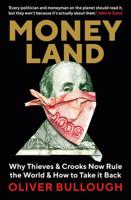Publisher's Synopsis
The financial regulatory system has been described as fragmented, with multiple overlapping regulators and a dual state-federal regulatory system. The system evolved piecemeal, punctuated by major changes in response to various historical financial crises. The most recent financial crisis also resulted in changes to the regulatory system through the Dodd-Frank Wall Street Reform and Consumer Protection Act in 2010 (Dodd-Frank Act; P.L. 111-203) and the Housing and Economic Recovery Act of 2008 (HERA; P.L. 110-289). To address the fragmented nature of the system, the Dodd-Frank Act created the Financial Stability Oversight Council (FSOC), a council of regulators and experts chaired by the Treasury Secretary. At the federal level, regulators can be clustered in the following areas: Depository regulators-Office of the Comptroller of the Currency (OCC), Federal Deposit Insurance Corporation (FDIC), and Federal Reserve for banks; and National Credit Union Administration (NCUA) for credit unions; Securities markets regulators-Securities and Exchange Commission (SEC) and Commodity Futures Trading Commission (CFTC); Government-sponsored enterprise (GSE) regulators-Federal Housing Finance Agency (FHFA), created by HERA, and Farm Credit Administration (FCA); and Consumer protection regulator-Consumer Financial Protection Bureau (CFPB), created by the Dodd-Frank Act. These regulators regulate financial institutions, markets, and products using licensing, registration, rulemaking, supervisory, enforcement, and resolution powers. Other entities that play a role in financial regulation are interagency bodies, state regulators, and international regulatory fora. Notably, federal regulators generally play a secondary role in insurance markets. Financial regulation aims to achieve diverse goals, which vary from regulator to regulator: market efficiency and integrity, consumer and investor protections, capital formation or access to credit, taxpayer protection, illicit activity prevention, and financial stability. Policy debate revolves around the tradeoffs between these various goals. Different types of regulation-prudential (safety and soundness), disclosure, standard setting, competition, and price and rate regulations-are used to achieve these goals. Many observers believe that the structure of the regulatory system influences regulatory outcomes. For that reason, there is ongoing congressional debate about the best way to structure the regulatory system. As background for that debate, this report provides an overview of the U.S. financial regulatory framework. It briefly describes each of the federal financial regulators and the types of institutions they supervise. It also discusses the other entities that play a role in financial regulation.









